- Home
- Antonia Fraser
The Gunpowder Plot Page 10
The Gunpowder Plot Read online
Page 10
Robert was known to be a devout Catholic. He had also made a grand marriage to Gertrude Talbot, kin to the Earl of Shrewsbury, which brought him yet deeper into the Catholic world. His wife’s family had suffered much for recusancy: her father, John Talbot of Grafton Manor near Bromsgrove, had spent nearly twenty years in prison, and her mother, a Petre, was the daughter of Queen Mary Tudor’s Secretary of State and sister to that hospitable Sir John Petre who was the patron of William Byrd.27 Maybe it was Gertrude Wintour’s influence which made Robert so strong for the Faith, or maybe he had deliberately sought out a devout Catholic bride. At all events, Huddington Court, under the sway of Robert Wintour, was a known refuge for priests, where secret Masses could and would be celebrated.*
Tom Wintour, intelligent, possessed of a strong personality, with neither the burden nor the advantage of an estate, grew up to be an operator rather than a benefactor. Here was a reverse of Jack Wright: not a strong silent man with a sword but an argumentative one, with the reputation of being skilful in debate, inclined to win the day over his opponents. He was a short, stocky man and like Robert was physically very fit. Lack of stature did not prevent Tom being considered good-looking, with his sparkling eyes and a face that was ‘round but handsome’. Having received an education as a lawyer – a natural profession perhaps for one of his disposition – he took to a life of ‘dissipation’, in Father Tesimond’s words, at least for a while.28
Tom, like so many others of his class and background, crossed the sea to Flanders in the Spanish Netherlands. At first, however, he enrolled in the English army fighting Spain in the Low Countries on behalf of the Protestant rebels: dissipation did not match with religious enthusiasm. Tom had always been interested in history and he now acquired a special interest in military history, as well as experience as a soldier. Naturally he became familiar with the Flanders scene: expatriates, intriguers as well as fighters, and many who were all these things. He also fought in France and maybe in Central Europe against the Turks. He certainly learnt Spanish – which would be important – as well as French and Latin.
Then something changed Tom Wintour. About 1600 he became as passionate a Catholic as his soberer brother, who went often to the Sacraments. Tom Wintour gave as his reason that he had come to see the injustice of the English war in Flanders, supporting the cause of the Protestant rebels against the imperium of Catholic Spain. But he must also have been convinced of the paramount truth of Catholicism. It therefore seems more likely that Tom, in his late twenties, first reverted to the traditions in which he had been raised, a spiritual journey which is not particularly unusual, and then threw in his lot with Spain.
One might add in parenthesis that a conversion of this sort, a rejection of youthful misdemeanours, a ricochet towards ardent piety, has been the sign of many fanatics in history, not all evil but some sanctified (such as St Augustine). It is another common factor among the so-called Plotters which is surely not altogether coincidental: at least four of them – as it happens, the leading figures – had undergone this very same process.
At all events, Tom Wintour changed sides. Late in 1601 he arrived in Spain, with the aim of contacting the Council on behalf of various Catholic dissidents left behind, rudderless, after the execution of their patron Essex. His primary aim seems to have been to secure Spanish money to provide modest English Catholic help as and when a Spanish invasion took place. Meanwhile not only would the Catholic faction in England be strengthened but the Spanish King would ‘have them at his devotion’. Wintour’s hope was for a faction vigorous enough to press for toleration.29
Nearly five years later, this mission, together with a second mission of 1603, was christened the ‘Spanish Treason’. It would be the subject of fearful denunciation on the part of the English government. Details were altered (including the personnel involved) to suit the government’s purpose. Sir Edward Coke, for the government, would furiously declare that Wintour had promised ‘two thousand horses’ from the English Catholics to help the Spanish on their arrival in England: horses, fit for military service, to be kept in permanent readiness for this happy event.30
If Wintour did make such promises, believing them himself, he was certainly living in the realm of fantasy since there was no question of these famous ‘Catholic’ horses existing. Furthermore, the point about horses suitable for military service is an important one: in an age dedicated to the horse as a means of transport, one horse was by no means like another. The English Catholics may well have possessed, among them, two thousand horses of different varieties all over the country. But the horses which the Spaniards had in mind were exceptionally strong, heavy animals with great powers of endurance – war-horses, in other words, which, if truly kept in readiness, would be obvious targets for government inspection. They would also be extremely expensive, both to buy and to maintain.
Wintour was not a fantasist. At the same time he was a natural advocate – and a trained one – who knew exactly the picture he wanted to paint to the Spanish court. He intended to portray the kind of English Catholic readiness which would duly inspire Spanish financial subsidy. So while Wintour certainly did not promise exactly what Coke said he had, he may well have touched up the picture in rather more vivid colours than the situation actually warranted. He would have seen it as being in the best interests of his co-religionists to exaggerate their numbers and strength in order to lure the Spanish forward.
Further red herrings arose in later accounts of the affair. The visit by Father Oswald Tesimond to Spain in the spring of 1602 on some kind of mission to do with the Appellant controversy was one of them. Wintour’s introduction from Father Henry Garnet to the English Jesuits in Spain, and their Superior Father Joseph Cresswell, was another. This introduction was by no means a unique event: Garnet often provided such links to Cresswell. In this case, it seems likely that he believed Wintour’s mission was to secure Spanish pension money for destitute Catholics (another objective which was comparatively common) rather than anything more militaristic.31 But these connections could, much later, all be drawn into a damaging web.
Wintour, with the probable aid of another Englishman in Spain called Thomas James, found himself grappling with the Spanish Council at an unpropitious moment. Invasions were no longer popular projects. The Spanish attack on Kinsale of 1601, when Spanish troops landed in the south of Ireland in support of native Irish rebels, had been a disastrous failure. It was however true that Wintour had an ally in Father Cresswell, whose position gave him access to the Spanish Council and Philip III. It was a connection which Father Cresswell had long utilised to lobby energetically for an armed assault on England.
Perhaps it was Cresswell’s assiduity, perhaps it was Wintour’s eloquence. For the evidence does point to some kind of promise of Spanish money being given in the summer of 1602, as a prelude to unspecified Spanish armed help. Certainly no practical details were included, the name of the commander, for example, or the number of troops involved.32
Such vague assurances on the part of Spain, which could if necessary be denied later, were the stuff of diplomacy (as King James was demonstrating about the same time in Scotland). By the autumn of 1602, in any case, Spanish attention was turning ponderously in the direction of peace with England. In the event, the money would never be paid. Yet Wintour and others in his circle were convinced still that Spain would provide them with a solution.
King James in Scotland had declared that he would not shed blood for the sake of ‘diversity of opinions’ in religion, so long as the Catholics remained quiet. Tom Wintour and his associates could hardly be said to fit into such a peaceful scenario. It was unfortunate that on the eve of the King’s arrival in England the Catholics themselves were exhibiting a diversity of opinions as to how they should proceed. At certain levels they suffered from unhappy internal divisions, and at other levels were ominously restless. And yet the mood was one of optimism on both sides.
Ten years earlier at a time of great persecution in the n
orth of England, Father Henry Garnet had convinced himself that the Faith was still flourishing in spite of these privations: indeed it shone more brightly every day ‘like gold in the furnace’. Despite the testing of his confidence in some dark years, he felt that in time all would observe ‘the religious conduct of Catholics’. By the summer of 1603, Father William Wright, a priest recently returned from abroad, prophesied that: ‘It will come to pass that we in England shall have a toleration as the Huguenots have in France.’33
As for King James, a man in his mid-thirties, coming to the promised land, he was almost childish in his joy, and in his expectations of the English. He was quite confident that they would prove a great deal easier to manage than the Scots: ‘Alas, it is a far more barbarous and stiff-necked people that I rule over.’ Scotland was ‘a wild unruly colt’, wrote the King, with a passion for equestrian sports, whereas in England ‘St George surely rides upon a towardly [docile] riding horse.’34
It remained to be seen which of these contrasting expectations – if any – were well founded. For the Catholics at least there were some cheerful portents. An early recipient of the royal favour was the crypto-Catholic Henry Howard, whose much disgraced family the King now embraced: ‘I love the whole house of them.’ Howard was given the precedence due to a duke’s son and made a Privy Councillor by a King ‘not ignorant of how many crosses he has sustained’; the following March he was created Earl of Northampton.*35 In early July the recusant Sir John Petre of Ingatestone Hall, uncle of Gertrude Wintour, was created Baron Petre of Writtle: William Byrd’s Mass for the Feast of St Peter and St Paul (29 June) may have been written as a play on his patron’s name, in tribute to the event.36
But the most significant royal appointment, at least from the Catholic point of view, was that of Northumberland. He had continued to play his unofficial role of Catholic emissary at his first meeting with King James in early May, before the King reached London. Northumberland presented a petition on the Catholic behalf, although he took care not to sign it himself (he was after all not actually a Papist, even if many of his best friends were). Now he was installed as Captain of the Gentleman Pensioners, the royal bodyguards. This was an important as well as a prestigious post. Not only did it keep Northumberland in close contact with the King, but it gave him opportunities for personal patronage in appointing further royal bodyguards such as the ambitious and unscrupulous Thomas Percy. It was an appointment which would, in the next few years, alter the whole direction of Northumberland’s life.
* Twigmoor Hall still bears traces of numerous subterranean passages; on one occasion in 1940 a tenant farmer Percy Chappel discovered a complete room with stabling for a horse underground when the leg of his wife’s grand piano went through the floor.
* Huddington Court, still privately owned and still in Catholic hands, is another house which remains as an eloquent memorial to the events of 1605; two hiding-places can still be seen, probably constructed by Nicholas Owen. One is off a top room which would have been used, for reasons of security, as a chapel; it also has an inner hole, barred by an extremely heavy door: this might remain undiscovered if the searchers were satisfied with their first find. There is another hiding-place in the attic room opposite.
* But for simplicity’s sake he will now be described as Northampton in the text, anticipating the creation.
PART TWO
The Horse of St George
Saint George surely rides upon a docile riding horse…
KING JAMES VI
to Robert Cecil
CHAPTER FOUR
A King and his Cubs
This fair inheritance from the loins of our ancient Kings… your Princely offspring.
WELCOME SPEECH OF THE SHERIFFS OF LONDON
AND MIDDLESEX
to James I
‘Do you not think my Annie looks passing well?’ King James asked a courtier at Windsor on 30 June 1603. After this informal invitation to comment on the looks of his Queen, the King took his daughter Elizabeth in his arms and gave her a kiss. ‘My Bessie too is not an ill-favoured wench,’ added the fond parent. ‘And may outshine her mother one of these days.’1
It was not the unceremonious style of James I which made such a scene startling to the English. Although they would come to miss their gracious and dignified old Queen, this was still the honeymoon period for James, the robust male monarch who had come to do the work for which his sex was best fitted, after years of ‘unnatural’ female rule. This was a mood expressed with fervour (if not talent) by Cecil’s brother Burghley in an ode of acclamation:
And all the way of James he loudly sang,
And all the way the plain
Answered ‘James’ again.2
For England, ‘the horse of St George’, it was this phenomenon of a Royal Family – as opposed to a solitary individual on the throne – which was so striking because it was so novel.
Queen Anne had brought Prince Henry and Princess Elizabeth south with her in a triumphal progress of perpetual entertainment which occupied most of June. Great houses were almost as eager to welcome the distaff side of the new dynasty as they had been to bow before their sovereign. As for the great ladies, eagerly anticipating rich pickings at the new parallel court of the Queen Consort, they vied with each other in rushing north, as earlier their husbands had done. The race was won by the enterprising Lucy Countess of Bedford, who became one of the Queen’s closest friends.
There had not been a Queen Consort’s household – an elaborate structure second only to that of the King – since the days of Queen Catherine Parr, last wife of Henry VIII. But Catherine Parr had been by birth a commoner whereas Anne of Denmark was a king’s daughter. Thus the true comparison was felt to be with the much more magnificent household of Henry’s first wife, the Spanish Princess Catherine of Aragon. This was also true of Queen Anne’s financial arrangements: Robert Cecil’s notes on her jointure refer back specifically to that period, almost a century before, of domestic royal innocence when Henry VIII made his first marriage.3
In the south King James grew cross with some of the appointments made by his ‘Annie’, threatening to ‘break his staff of Chamberlainship’ over one man’s head. He also occupied himself, in his pedantic way, with giving orders about the old Queen’s jewels and her heavily encrusted dresses (considered with reason treasures of state in their own right). By custom these went to the new incumbent, but James thought it necessary to have sent north only those things judged suitable for ‘the ordinary apparelling and ornament’ of his wife.4 None of this could mitigate Queen Anne’s sheer enjoyment of her new life. She bade fair to love riding the horse of St George quite as much as her husband, if for different reasons.
Queen Anne loved pleasure and quickly found that in England there was more pleasure to be had than in Calvinist Scotland. But she was no fool and certainly not a Philistine. Her family had had a tradition of literary patronage, particularly her mother Sophia of Mecklenburg, who had supported the philosopher Tycho Brahe. The Queen’s new best friend the Countess of Bedford – ‘Lucy the bright’ as Ben Jonson called her – was one of the most cultured women of her age. When Emilia Lanier, Shakespeare’s Dark Lady, envisioned Queen Anne as a patroness of female talent in a petition at the beginning of her reign, her words did not, like so many other petitions to royalty, have an utterly ludicrous ring:
Vouchsafe to view that which is seldom seen,
A woman’s writing of divinest things…5
Queen Anne’s own idea of pleasure was dancing in a masque written by Ben Jonson, with scenery and costumes designed by Inigo Jones (or having a palace built for her at Greenwich, also by Inigo Jones). These were royal tastes for which the English should be suitably grateful in view of the rich heritage which they handed down to posterity. All of this, of course, was extremely expensive, as pleasures usually are. The King’s grumbling (and Cecil’s more discreet moans) would become fearful. On the Queen’s journey south, however, as in so many royal beginnings, the
mood was halcyon.
The most luminous of all the entertainments was a production of Ben Jonson’s masque The Satyr at Althorp in Northamptonshire on 25 June. The host was Sir Robert Spencer (created Lord Spencer, as a reward, in July).6 It was the Queen’s first encounter with Jonson’s work but she could hardly fail to be touched by verses which were both flowery and friendly. As fairies skipped about, and an eponymous satyr emerged from the undergrowth to apostrophise the visitors, the general tone of the proceedings was that which Disraeli would recommend when dealing with Queen Victoria two centuries later: ‘Everyone likes flattery; and when you come to Royalty, you should lay it on with a trowel.’ Two days later the King was reunited with his family, not seen since April, at Easton Neston, near Towcester.
On 2 July Prince Henry was invested as a Knight of the Garter at Windsor. At nine years old he was a tall, handsome boy, full of self-confidence. The wish expressed in The Satyr – ‘O shoot up fast in spirit as in years’ – seemed likely to be fulfilled. Prince Henry made an excellent impression during the ceremony, just as he had on his way south with his dancing skills. Not only was his ‘princely carriage’ admired but also the intelligent, lively manner in which he answered the ritual questions. At the altar he performed his obeisance with grace. Like his mother, but unlike his father James, Prince Henry already possessed the kind of easy royal manners which courted popularity. The following spring at the procession before the Opening of Parliament, Prince Henry showed himself ‘smiling and overjoyed’ as he acknowledged the loyal cheers by bowing this way and that. All this was described as being to the ‘eternal comfort’ of the people.7

 Warrior Queens
Warrior Queens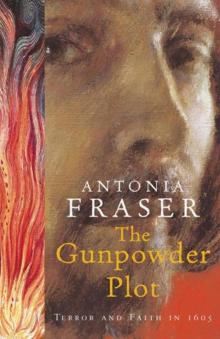 The Gunpowder Plot
The Gunpowder Plot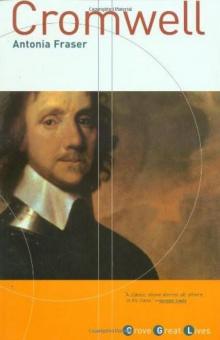 Cromwell
Cromwell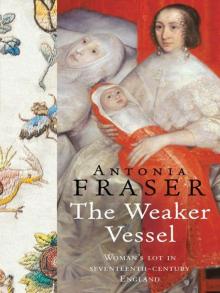 The Weaker Vessel: Women's Lot in Seventeenth-Century England
The Weaker Vessel: Women's Lot in Seventeenth-Century England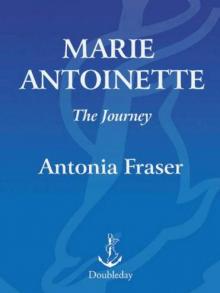 Marie Antoinette: The Journey
Marie Antoinette: The Journey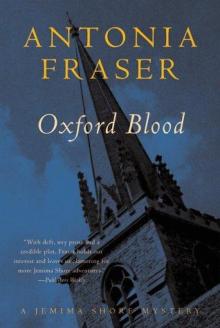 Oxford Blood
Oxford Blood Your Royal Hostage
Your Royal Hostage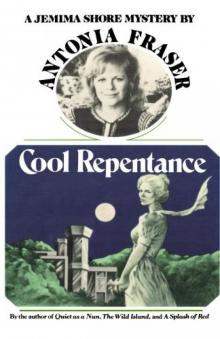 Cool Repentance
Cool Repentance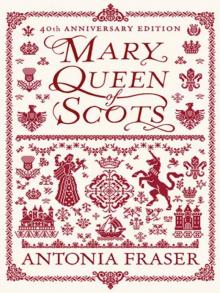 Mary Queen of Scots
Mary Queen of Scots Political Death
Political Death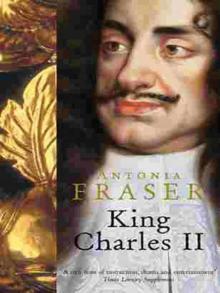 Royal Charles: Charles II and the Restoration
Royal Charles: Charles II and the Restoration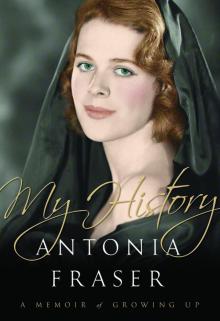 My History: A Memoir of Growing Up
My History: A Memoir of Growing Up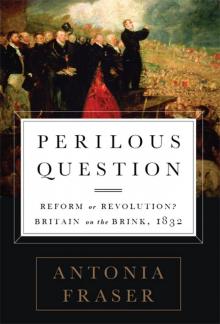 Perilous Question: Reform or Revolution? Britain on the Brink, 1832
Perilous Question: Reform or Revolution? Britain on the Brink, 1832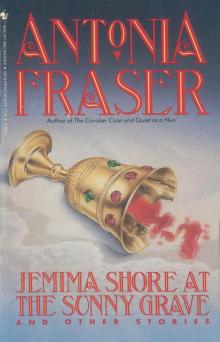 Jemima Shore at the Sunny Grave
Jemima Shore at the Sunny Grave A Splash of Red
A Splash of Red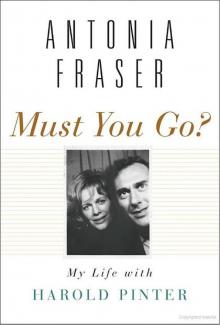 Must You Go?: My Life With Harold Pinter
Must You Go?: My Life With Harold Pinter Love and Louis XIV: The Women in the Life of the Sun King
Love and Louis XIV: The Women in the Life of the Sun King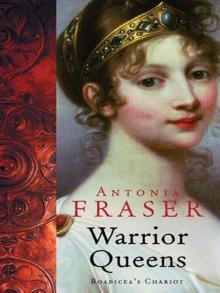 The Warrior Queens
The Warrior Queens The Wild Island
The Wild Island Quiet as a Nun
Quiet as a Nun Perilous Question
Perilous Question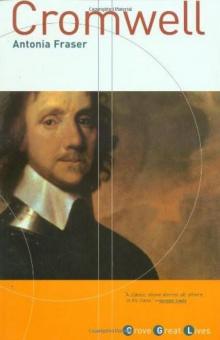 Cromwell, the Lord Protector
Cromwell, the Lord Protector Gunpowder Plots
Gunpowder Plots The Wild Island - Jemima Shore 02
The Wild Island - Jemima Shore 02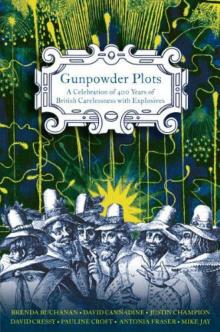 Gunpowder Plots: A Celebration of 400 Years of Bonfire Night
Gunpowder Plots: A Celebration of 400 Years of Bonfire Night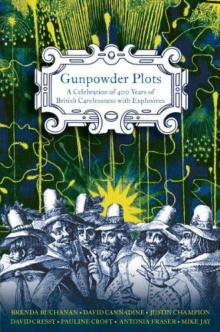 Gunpowder Plots_A Celebration of 400 Years of Bonfire Night
Gunpowder Plots_A Celebration of 400 Years of Bonfire Night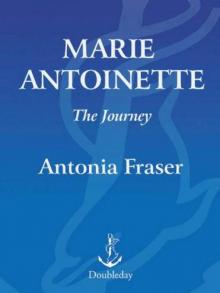 Marie Antoinette
Marie Antoinette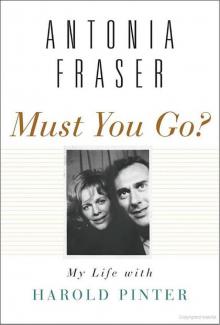 Must You Go?
Must You Go?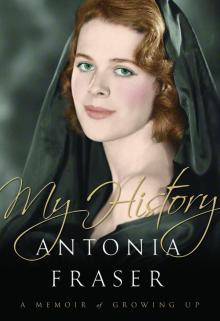 My History
My History